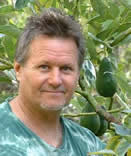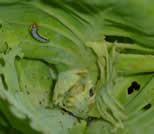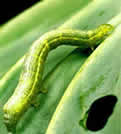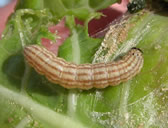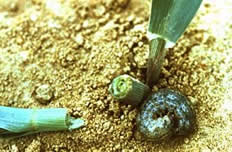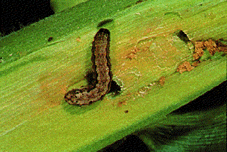|
|
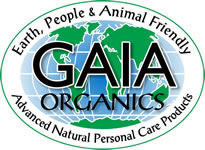 |
|
 |
 |
|||||||||
|
This article is a work in progress and as it is expanded, new text will temporarily appear in black, until newer material is in turn incorporated. Please be sure to check back for updates if you are interested in discovering truth for yourself. About the Author Stuart has been a holistic health researcher almost full-time since becoming a whole-food vegetarian 30 years ago. Following insecticide poisoning whilst living on a strict fruitarian diet on largely commercial fruit for a mere year (organophosphates were at that time just beginning to replace the organochlorines as insecticides in agriculture) he started growing organic vegetables, herbs and fruits in earnest wherever he could, including on the roof of his house.
Back in the early 80's
Stuart was a volunteer worker with Odyssey Magazine
and had his first article published in the Feb/March 1984 edition,
titled "Vitamin B12: the facts" (defending vegetarianism
against medical scare tactics propaganda), was a research associate
with Koeberg Alert, escaping to the Garden Route
just before the nuclear power-station became operational and PW
Botha's Military Police were forcing ex-servicemen to conduct township
raids. Stuart and his wife Lettie spent more than a decade living
off the land with milch goats, bees, organic fruits and vegetables
for food and harvesting and distributing herbs and especially herb
seeds for an income, out of which Rainbow Organics
was born at Rondevlei Herb Farm near the Wilderness, which they
successfully managed at that time in the late 80's.
Striving for a self-sufficient lifestyle, Stuart eventually successfully grew all his family’s food requirements to strict organic principles for over a decade, which included collecting and growing toxic natural pesticidal and volatile companion plants and eventually becoming the continent’s expert on botanical pesticides (from plants) and formulating and sharing his first all natural botanical pesticide with fellow enthusiasts under the name of Bio-Bug-Go, (click for an archived scan) which consisted of 3 botanicals: Rotenone, Pyrethrum, Black Pepper; and Diatomite (sharp ancient algal exoskeletal particles). During this time, Stuart was a dedicated environmental activist, founding the Garden Route branch of Earthlife Africa. Stuart had his work featured in the in the first “Sunday Times Magazine Earth Day Feature” (April 22, 1990) and had his first Gaia Research Institute Report, titled: “Pesticide Exposé: What You Don’t Know, Can Hurt You” published in South Africa’s first dedicated environmental magazine, “The Green Pages” (November 1990). Later, in 1996 Stuart founded PHARMAPACT, the Peoples Health Alliance Rejecting Medical Authoritarianism, Prejudice And Conspiratorial Tyranny to campaign against the Medicine Control Council’s attempted declaration of natural health products as regulated medicines. In 1998, Stuart submitted two reports, totalling 350 pages to the Minister of Health, in “Protest of Fluoridation of Public Water Supplies” and in 1999 presented to the full MCC, a 39-page “Traditional African Medicine Genocide” report. Founded in 1990,
the Gaia Research Institute became a formal focal point for Stuart’s
organic food growing research, with special emphasis on plant-based
pesticides, funded by the proceeds from his natural personal care
products trading as Rainbow Organics, which by 1997 had become a
formal closed corporation, Gaia Research, trading as Gaia Organics,
which name and logo has as its main strength, being synonymous with
unquestionable integrity. In an apparent paradox, that has been
difficult to communicate with gullible consumers who have been indoctrinated
with non-scientific new age mumbo jumbo, the concept that because
something is natural or organic, does not necessarily equate with
it being safe. A simple assessment of the natural kingdom, eg venoms,
pathogens and poisonous plants are undisputedly many magnitudes
more toxic than any man-made substance including those specifically
designed to kill, eg pesticides and warfare agents. Introduction
As fruits ripen to reproductive completion, they, with exception of their seeds, relinquish all sense of self-preservation. Vegetables however, only reach reproductive completion well past their palatable and nutritional peak and their toxic defensive chemicals are rendered inert only on decomposition of the plants themselves. Man-made pesticides on the other hand, are designed to break down to safe residues over specific withholding periods that the farmer is obliged to observe and generally do judging by routine residue analysis, hence concern over non-existent risk should be rationalised. |
|||||||||
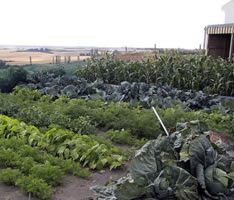 |
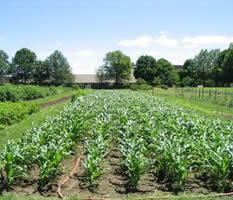 |
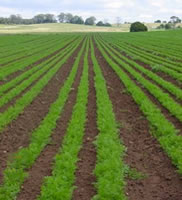 |
Small-Scale Family
Food Garden |
Medium-Scale Farm | Large-Scale Farm |
The extent to which farmers comply with
international safety specifications regarding the selection,
timing and manner of application of synthetic pesticides, determines
the degree of relative risk or safety to both farm workers and
consumers on a continuum ranging from slight or occasional health
risk, to the complete absence of any measurable risk, which
continuum is equivalent to that of large-scale haphazard organic
farming, compared with knowledgeable and experienced hands-on
organic food gardening in the family vegetable patch, which
is the only safe scale for organics. As the toxicity of the remaining few older pesticides sees their continuing demise and the toxic potential of modern alternatives decrease further and knowledge of the ‘natural’ toxic potential of predation- and infection-stressed commercially grown organic produce concurrently increases, there ought to be a moderation of the current idiotic and hyped trend towards organic food, medicinal and personal care ingredient plants. Plants need little more than fertile soil, sufficient water and a suitable climate to survive to maturity. When an enterprise is commercial, the presence of predacious and infectious pests assumes greater importance in the modern conventional paradigm, which emphasises near prophylactic avoidance of a build-up of pests to epidemic proportions and near perfection of the cosmetic appearance of produce. Whilst this apparent obsession is criticised by the organic faction, the conventional paradigm does have the distinct advantage of limiting concentrations of persistent endogenous defensive toxins that render the produce of the organic faction far inferior from a food safety perspective. I refer to organics as a faction, since it is this grouping that publicly holds itself as apart from and superior to the majority of this sector.
The conventional paradigm is historically
vigorously and openly self-critical, the organic faction not,
with the result that the former is constantly in a state of
reform towards higher integrity, whereas the latter, believing
itself perfect, sadly, indeed dangerously from a consumer standpoint,
is incapable of enlightenment and hence of increasing its integrity
and as such is unable to meet the overly optimistic expectations
of consumers from a health and safety perspective. Plants that
have to constantly defend themselves via the production of their
own defensive toxins logically have to draw on their nutritional
reserves to produce these chemicals, rendering ludicrous common
claims of broad nutritional superiority. The price-differential
renders automatically any occasional minor nutritional advantages
totally irrelevant. Organic Standards are philosophical, rather
than science-based and are but a joke to those who know better.
Neither paradigm is perfect and what is needed is a merging
of dichotomies via a middle way, an integrative agronomy akin
to what is already underway in medicine and did start somewhat
earlier, but is more slowly catching on in agriculture, which
wholistic approach will better serve humankind as a whole. This
article is my contribution to this enlightened end. The variety of chemicals that humans encounter is theoretically infinite if no limit is set on the molecular size of chemicals. In practice, however, chemists tend to produce synthetic chemicals or analyze natural chemicals that are between a molecular weight of a few hundred to a few thousand. Millions of synthetic chemicals are registered with the American Chemical Society, but fewer than 100,000 are currently in commercial or industrial use and, therefore, available for introduction into the environment (US Environmental Protection Agency, 40 CFR Part 799. Fed Regist 62(158):43820-438649 EPA, 1997). Approximately 600 different pesticide chemicals are in use (Pimentel D, ‘Pest Management In Agriculture’, In D Pimentel, (Ed), Techniques for Reducing Pesticides, John Wiley & Sons, 1996). A much larger number of natural chemicals, about 6 million, exist by the above molecular size criteria. The total number of plant chemicals exceeds 400,000 (Keelerm R & A Tu, “Toxicology of Plant and Fungal Compounds”, Handbook of Natural Toxins, Vol 6, M Dekker, NY, 1991); (Harborne J & H. Baxter, Dictionary of Plant Toxins, Wiley, NY, 1996). Of these, tens of thousands of secondary metabolites have been identified and hundreds of thousands exist, whose major roles in the plants are defensive (Swain T, Annu Rev Plant Physiol, 28, 479–501, 1977); (Duke S, ‘Natural Pesticides From Plants’, in J Janick & J Simon (Eds), Advances in New Crops. Timber Press, Portland, OR, 1990). Naturally occurring substances sometimes have significant toxic properties (National Research Council, Carcinogens and Anti-carcinogens in the Human Diet, National Research Council, Wash, DC, Natl Acad Press, 1996). Plants raised for pest resistance and grown without artificial pesticides may produce high levels of natural toxins that pose risk to consumers (Jim Kirkland, Nutr 4510, Toxicology, Nutrition & Food, Dept Human Health & Nutrition al Sciences, University of Guelph, Ontario, Canada, Fall, 2005). Organically grown plants may each produce a minimum of 50 such natural pesticides. Prof Bruce Ames is quoted as saying that the average person consumes 1500mg of pesticides a day, of which 1499.91mg are endogenous toxins, the remaining 0.09mg being synthetic pesticides applied to the produce by the farmer. Indeed, selective-breeding of conventional, as opposed to organic produce has favoured plants that synthesise the least and the most endogenous toxins respectively. Organic systems provide increased opportunities for insect attack and chemical defense. All plants, but especially those with abundant foliage, produce endogenous toxins in defence against attack by insects and their larvae. Organic vegetables are subject to much more insect attack than and hence have concentrations of these toxins considerably higher than in those vegetables treated with exogenous pesticides. (Graham I, “Endogenous Toxins of Plants”, The Thought Field, 10(1), 2004); (Young J et al, Mol Nutr Food Res, 49(12), 2005) Based upon the US National Toxicology Program rodent carcinogenicity database, researchers predict that a large proportion of natural pesticides present in edible plants are likely to be rodent carcinogens (Rosenkranz H, Klopman G, Carcinogenesis, 11: 349-353, 1990). An investigation of xenobiotics by analysis of 10,000 chemicals, both synthetic and natural, has revealed an association between resistance to biological degradation and the prevalence of chemicals with the potential to induce systemic toxicity and cancer (Pollack N et al, Mutat Res, 528(1-2), 2003), the implication being that natural pesticides are more likely to cause more poisoning and malignancies than exogenous classes. In scientific terms, toxins are biogenic non-replicating natural substances that cover an immense range of compounds that act in many different ways on many different important body processes, specifically enzymes, cell membrane structures, ion-channels, receptors, ribosomal proteins, etc, to induce a vast array of lethal and non-lethal toxic effects. Research in natural toxins is a new subject, toxinology, constituting a military risk threat, since these exhibit higher toxicity than classic synthetic warfare nerve agents, some natural toxins being even 1,000,000 times more toxic than synthetic nerve agents. All of the known most potent toxic substances - with mammalian toxicity higher than 0.1 µg/kg - are in fact, the natural toxins (Chen Ji-sheng, Assessment of Toxins, Research Institute of Chemical Defense, Beijing, China, 2004). Ricin is a naturally occurring toxin derived from the beans of the castor oil plant Ricinus communis, considered a potential chemical weapon (Bradberry S et al, Toxicol Rev, 22(1), 2003). The use of biological agents as weapons of terror has now been realized. The new, emerging threat agents are natural biotoxins produced by plants, fungi, and bacteria. (Patocka J, Streda L, Acta Medica, 49(1), 2006). In addition to the long history of disease and death from natural toxicants in plants, there is a growing literature about the abundant levels and varieties of natural toxicants in our foods, which natural chemicals cause mutagenicity, carcinogenicity, teratogenicity, neurotoxicity and visceral organ toxicity in routine laboratory tests. There is evidence that a large number of natural toxicants in our food supply increase and decrease with higher and lower levels respectively of plant stress from infection or predation. In addition, fungal infections induce a chemical response from the plant, and also excrete their own array of toxins, sometimes at high levels. Crop protection chemicals reduce plant stress, yet there is no pesticide risk management program that evaluates the risk versus benefit equation to balance the risk from crop protection chemicals (which are extensively tested and heavily regulated) against the benefit of decreased risk from natural plant and fungal toxicants (which are only sporadically tested and regulated). Inattention to this phenomenon (eg in organic farming) may lead to an unintended increase in exposure to this wide array of naturally occurring chemicals (Mattsson J et al, Neurotoxicol, 21(1-2), 2000). It can be confidently stated that modern pesticide safety regulation as pioneered in the USA and implemented by most countries, including South Africa, can ensure that conventionally grown produce is as safe as commercial organic produce from a consumer toxicity perspective. Under the Food Quality Protection Act of 1996, the U.S. Environmental Protection Agency (EPA) must ensure that, before registering a new pesticide, it can be used with a reasonable certainty of no harm to human health and the environment. To determine its safety, more than 100 scientific studies and tests are required from the applicants, from which the EPA sets (maximum residue) tolerance levels for food. Several factors must be addressed before a level is can be established, such as aggregate exposure, the cumulative effects from pesticides with similar effects, increased susceptibilities of certain populations, and endocrine disruptor effects. In this way, in addition to environmental effects, long- and short- term potential human risks are evaluated and if a pesticide is then determined to be both safe and effective for proposed uses, it is conditionally registered for limited use on specific crops, which are routinely tested to verify compliance. The US National Academy of Science has fully reviewed and endorsed the regulatory process (Committee on the Review of the Use of Scientific Criteria and Performance Standards for Safe Food, Scientific Criteria to Ensure Safe Food, National Research Council, NAS, National Academies Press, 2003). Limitations standing in the way of complete certainty of safety of man-made pesticides arise firstly as a result of 10 years of extensions of cutoff dates in the US EPA Reregistration Process that is reviewing all older pesticides according to modern criteria, whereby should applicants fail to submit deficient safety data, existing registrations are cancelled and the pesticides banned. Several older pesticide registrations have already been either cancelled by authorities or withdrawn by registration holders unable or unwilling to provide the outstanding safety data to stringent priority schedules. Failure to ensure optimal consumer safety also arises from conventional farmers neglecting to observe strict obligatory withholding periods between pesticide applications and harvest also and also failures by domestic and local governments to monitor and prevent pesticide application infringements from entering the food chain, but these criticisms apply equally to organic produce, where several toxic chemicals are permitted and inadequately regulated. I am certainly not alone in this view. One researcher authored a 90-page report titled “Natural Pesticides and Bioactive Compounds in Foods” (Beier R, Rev Environ Contam Toxicol, 113:47-137, 1990). which cited 1015 scientific references. There is no reason why non-organic produce, as with organic produce, should not be privately certifiable as safe according to compliance with international criteria, since even given the use of older pesticides, there remains far more certainty of the safety of synthetic pesticides currently in use than with organic practices, since even if no pesticides are applied, the plants themselves will synthesise defensive chemicals against hugely disproportionate predation and infection. Such endogenous natural pesticides are totally unregulated, are not subject to any withholding period – the toxic natural chemicals remain active until the plant decomposes - and are known to be as toxic to all life forms as are man-made pesticides. Approximately half of such endogenous pesticidal secondary metabolites tested are in fact carcinogenic in standard rodent tests, the same ratio as man-made toxins, most of which are already prohibited, banned or restricted, which is certainly not the case with endogenous natural pesticides. Georges Werner, Research Director at the Institute de Chimie des Substances Naturelles, France, has put it thus: “Actually, there is no basic difference between ‘synthetic’ and ‘natural’ chemical substances; the latter may be as toxic as the former” (Letter, published in Time magazine, November 9, 1992). Many synthetic organic insecticides registered in the last decade have safer properties and smaller environmental impacts than older synthetic organic pesticides. One of the major benefits of pesticides is the protection of yield, which could decrease by as much as 50%, particularly of such perishable crops as fruits and vegetables (between 24 –57% depending on the crop species) because of insect and disease damage, without crop-protection. Furthermore, about 50% of the harvested crop, could be lost in transport and storage because of insects and disease in the absence of pesticide use. Moreover, pesticide use can improve food quality in storage by reducing the incidence of such fungal contaminants as aflatoxins, known liver carcinogens, which are responsive to fungicides. (Oerke E et al, Crop Production and Crop Protection: Estimated Losses in Major Food and Cash Crops, Elsevier, Amsterdam, 1994) Health benefits of organic food over conventional food have not even been conclusively proved scientifically (C Winter, Food Safety Program, University of California, Davis, personal communication, April 8,1998, referenced in: Committee on the Future Role of Pesticides in US Agriculture, Board on Agriculture and Natural Resources, Board on Environmental Studies and Toxicology, National Research Council, 2000). Among several plant defense proteins,
proteinase inhibitors are an important group that are known to
be inducible in plants by injuries, such as insect damage (Casaretto
J, Corcuera L, Biol Res, 28(4), 1995).
Protease inhibitor proteins are among the defensive chemicals
in plant tissues that affect growth and development of pests,
by attenuating enzyme function necessary for metabolic processes
such as protein turnover or proteolytic digestion required for
nutrient assimilation. The major digestive proteases utilised
by herbivorous pests are serine, cysteine and aspartyl proteases.
Inhibitors against all have been identified in plants and shown
to inhibit proteolytic activity and growth of pests. (Koiwa
H et al, “Regulation of Plant Defense Against Herbivorous
Pests”, in M Dominique (Ed), Recombinant Protease Inhibitors
in Plants, Landes/Eurekah Bioscience, 2000)
This, of course raises the question as to whether these protease
inhibitors present any health hazards to humans. It is well documented
in the literature that protease inhibitors do act as an antinutritional
factor. Animal experiments show that inhibitors depress growth
by interfering with protein digestion, but perhaps even more importantly,
lead to hypertrophy and hyperplasia of the pancreas. It is also
known that the human pancreas responds negatively to the effects
of a protease inhibitor. (FIFRA
Scientific Advisory Panel, SAP Report No. 2000-03B, September
28, 2000). |
|||||||||||||||
| The following few pages stem from a remarkable scientific investigation and pioneering analysis of data in the early 1990’s that would forever change the way that I would interpret the vexing problem of synthetic pesticide residues on fruits, vegetables and other natural foods and indeed the assumed esteem of organically grown produce. I was at the time a successful self-sufficient grower of my own organic vegetable requirements, pioneering the use of botanical pesticides (plant extracts) in organic methods. I was then also an active researcher/author critical of synthetic agrichemical practices, having 10 years earlier suffered organophosphate pesticide poisoning whilst living on a strict exclusively fruitarian diet. Within a year of accessing this research, I abandoned consumption of organic vegetables for reasons that will become clear, and went instead in pursuit of organic orchards and fruit as a matter of priority choice. The paradigm-shifting research referred to is that of highly respected biologists from the University of California, Berkeley and the Lawrence Berkeley Laboratory, led by the Professor Bruce Ames, whose credentials, briefly (to list his expertise, commissions, honours and awards would take 3 pages) are:
Credentials: Bruce Ames is Professor (& Chairman of Department) of Biochemistry and Molecular Biology, as well as Director, National Institute of Environmental Health Sciences Center, all at the University of California, Berkeley; Senior Scientist at the Nutritional and Genomics Center, Children's Hospital Oakland Research Institute, CA; and Project Director, National Foundation for Cancer Research, Bethesda, MA. Ames is a Member of the National Academy of Science, (USA) (and Commissioner, NAS Commission on Life Sciences) and a past Member of the Board of Directors of the National Cancer Institute and the National Cancer Advisory Board. Ames is a recipient of the Gold Medal Award of the American Institute of Chemists (1991); the Kehoe Award, American College of Occupational and Environmental Medicine (1997); the prestigious U.S. National Medal of Science (1998); the American Society for Microbiology Lifetime Achievement Award (2001); the Linus Pauling Institute Prize for Health Research (2001); and the Thomas Hunt Morgan Medal of the Genetics Society of America (2004). Ames’ research focuses on identifying mutagenic agents that damage human DNA and the consequences of for cancer and aging and also the antioxidant and other defenses against them. The Linus Pauling Institute Prize for Health Research recognises excellence in the field of orthomolecular medicine, especially the study of micronutrients, vitamins, and phytochemicals in promoting optimal health and in the prevention and treatment of disease. Dr. Richard Scanlan, Dean of Research emeritus at Oregon State University and the chair of the Prize Selection Committee, noted: "Bruce Ames has been described as the quintessential scientist. His enviable record of scientific accomplishments has resulted in approximately 450 scientific publications, and he is one of the most cited authors from the 1970s to the present. Like Pauling, Bruce Ames has been highly effective in communicating important health care information to legislative bodies, to policy makers, and to the general public." Witness for yourself my
précis of this extraordinary revolutionary research and conclusions
starting here: “The pesticides in our diet are 99.99% natural. Plants produce toxins to protect themselves against fungi, insects and animal predators in very much greater variety and at levels thousands of times higher than synthetic pesticides. Protecting crops is a trade-off between nature’s pesticides and synthetic pesticides. “Although only 50 natural pesticides have been tested in animal cancer bioassays, about half, similar to synthetic chemicals, are positive as carcinogens (cancer causing). The proportion of natural pesticides that that are clastogenic (break chromosomes in tissue culture) is also the same for synthetic chemicals.” “Although more than 99.9% of the chemicals humans eat are natural, only 75 of these have been tested in both rats and mice and about half are carcinogens. A high proportion of all chemicals, natural and synthetic, will prove to be mutagenic (mutations), carcinogenic and teratogenic (reproductive toxins).” “Since such a high proportion of test agents are positive, it is important to try to rank possible carcinogenic hazards from various chemicals. We used existing animal data to find out how close human exposures to rodent carcinogens compare to one another in terms of possible tumor induction hazard.” “Natural chemicals can and have been used by us as a reference for evaluating carcinogenic hazards from synthetic chemicals, which latter should ‘not’ be treated as a significant carcinogenic hazard if its own possible hazard is far below that of natural chemicals found in many common natural food items.” “Nature’s pesticides are one important group of natural chemicals that we have investigated. Tens of thousands of natural plant protective toxins have recently been discovered. Every species of plant (including those consumed by humans) usually contains a few dozen different natural pesticidal toxins.” “Some 10,000 natural pesticides are digested by humans at levels about 10,000 times more than man-made pesticides, in concentrations measured in parts per thousand or parts per million, rather than (the miniscule) parts per billion concentrations of synthetic pesticide residues on these same food plants.” “It is possible that every plant in the supermarket contains natural carcinogens (legumes, cereals, fungi, herbs, spices and beverages included with the fruits and vegetables) at levels commonly measured in the (highest) parts per thousand ranges, ie. thousands of times higher than from man-made pesticides.” “The human intake of natural pesticide toxins varies with diet and would be higher in vegetarians. Stressed and pest attacked (eg organically grown) plants increase their natural pesticide levels manyfold, occasionally to levels that are acutely toxic to humans” (extremely rare with synthetic pesticides). “Routinely, about
1,500mg of natural pesticides daily are ingested from food plant
products. Surprisingly few have been tested in animal cancer bioassays.
Among 1052 chemicals tested in at least one animal species, only
52 are naturally occurring plant pesticides, of which about half
are carcinogenic.”
“Sinigrin is co-carcinogenic. Sinigrin gives rise to allyl isothiocyanate on eating raw cabbage. Indole acetonitrille forms a nitroso carcinogen in the presence of nitrite. Indole carbinol, on ingestion, forms dimers and trimers, which mimic dioxin (TCCD), probably the most widely feared industrial toxin of all.” “The mitogenic effects of goitrin (which is also goitrogenic) and various organic cyanides from cabbage suggest that they may be potential carcinogens. Aromatic cyanides related to those from cabbage are known mutagens and are metabolized to hydrogen cyanide and potentially mutagenic aldehydes.” “Caution is necessary in interpreting the implications of occurrence of rodent carcinogenic natural pesticides. It is not argued that these are relevant to human cancer, but that exposures to natural rodent carcinogens casts doubt on the relevance of far lower exposure levels to synthetic rodent carcinogens.” “Indeed a diet rich in fruit and vegetables (not necessarily other food classes) is associated with lower cancer rates, probably because of anticarcinogenic vitamins and antioxidants in plants (which protect equally against natural and synthetic carcinogens, since the toxicology of both types of toxins is similar.” “The U.S. FDA has assayed food for known toxic synthetic chemicals, including pesticides and found residues averaging about 0.09 mg per person per day. We consider 0.05 mg of pesticide residues per day to be a reasonable rough estimate, which we compare to 1.5 g of natural plant pesticides consumed.” “Most of this daily intake of synthetic pesticides is composed of chemicals that were not carcinogenic in rodent tests. The intake of rodent carcinogens from synthetic residues would thus maximally be only about 0.05 mg a day (averaging about 0.06 ppm in plant food) even if all were carcinogenic in rodents.” (Ames
B et al, Proceedings of the National Academy of Sciences of the
USA, 87(19)[Part 2], 7777-7781, 1990).
In Part 1, pages 7772-7776 of this trilogy (by Ames and Gold), titled ‘Chemical Carcinogenesis: Too Many Rodent Carcinogens’, the authors, whose earlier work and development of the ‘Ames test for mutagenicity’ led to the banning of synthetic chemicals and their being the darlings of the environmental lobby and later recipients of an Outstanding Investigator Grant from the National Cancer Institute for this work, concluded in Part 1 of this trilogy: “We conclude that at the low doses of most human exposures, the hazards to humans of rodent carcinogens may be much lower than is commonly assumed.” I had read Ames’ earlier seminal research (Science, 221(4617), 1983) but wrongly believed, as many still do, that our body’s defences somehow coped with natural toxins, yet failed against synthetic toxics, but in Part 3, pp 7782-7786 of their 1990 trilogy in the Proceedings of the National Academy of Sciences, titled: ‘Nature's and synthetic chemicals: Comparative Toxicology’, Ames, Profet and Gold wrote as follows: “The toxicology of synthetic chemicals is compared to that of natural chemicals, the vast bulk to which humans are exposed. Animals have a broad array of inducible general defenses (sic) to combat the changing array of toxic chemicals and these defenses are effective against both natural and synthetic toxins.” “The synthetic toxin dioxin is compared to indole carbinol, a natural chemical in broccoli. The finding that a high proportion of both natural and synthetic chemicals are carcinogens, mutagens, teratogens and clastogens undermines current regulatory efforts to protect public health from synthetic chemicals.” “It is often assumed that because plants are part of human evolutionary history, whereas synthetic chemicals are more recent, the mechanisms evolved to cope with the toxicity of natural chemicals will fail to protect us against synthetic chemicals. This assumption is flawed for several reasons.” ”Defenses that have evolved are mostly of a general type, as might be expected, since the number of natural chemicals that might have toxic effects is so large. General defenses offer protection not only against natural but also against synthetic chemicals, making humans well buffered against toxins.” (Ames B, Magaw N, Gold L, Science, 236, 271-280, 1987); (Ames B, Gold L, Science 238, 1634, 1987); (Jakoby W (Ed) Enzymatic Basis of Detoxification, vols I and II, Academic Press, New York, 1980) “The reason that plant predators evolved general defenses against toxins is presumably to be prepared to counter a diverse and ever-changing array of plant toxins in an evolving world; if favoured foods became scarce or evolved new toxins.” (If this were not so, humans would have remained frugivores or perished) “Various natural toxins, some of which have been present throughout vertebrate evolutionary history, nevertheless do cause cancer. Mold aflatoxins cause cancer in rats, mice, monkeys and humans. Many common elements, including selenium and chromium are carcinogenic despite evolutionary presence.” “Plants have been evolving and refining their chemical weapons for at least 500 million years. Humans have not had time to evolve into a ‘toxic harmony’ with all of the plants in their diet. Indeed, very few of the plants that humans currently eat would have been present in an earlier evolutionary diet.” “The human diet has changed drastically in the last few thousand years, and most humans are eating many recently introduced plants that their ancestors did not. Natural selection works far too slowly for humans to have evolved specific resistance to the food toxins in these newly introduced plants.” “Poisoning from plant toxins in the milk of foraging animals was quite common in previous centuries. Plants foraged by cows are not toxins to which humans could have easily adapted. Abraham Lincoln's mother died from drinking cow's milk that had been contaminated with toxins from the snakeroot plant.” “Anticarcinogenic phytochemicals in the diet protect humans equally well against synthetic and natural carcinogens. Multiple hazard chemical synergisms occur from both natural and synthetic sources. These anticarcinogens do not distinguish whether carcinogens are synthetic or natural in origin.” “Natural and synthetic toxins can have the same toxicity mechanisms. Cabbage family vegetables contain indole carbinol, converted by stomach acid to dimers and trimers that bind to the body’s Ah receptor and which, in the presence of eg aflatoxin, causes mitogenesis, just like the feared synthetic dioxin (TCDD).” “The US EPA's human ‘reference dose’ of dioxin (TCDD) is 6 femtograms (fg) per kilogram per day. This should be compared with 5 mg of IC per 100 g of broccoli or cabbage. The effective dose to the Ah receptor from a helping of cabbage or broccoli would be 500- 1,500 times higher than that of dioxin.” “Since no plot of land is immune to attack by insects, plants, especially those who are the result of selective (palatability) breeding, need chemical defenses --either natural or synthetic-- to survive pest attack. There is an inevitable trade-off between nature's pesticides and synthetic pesticides.” “Wild plants and especially plants bred for pest resistance, contain more natural toxins and have caused unprecedented toxicity problems. ‘Organic farmers’ use natural pesticides that are not as extensively tested, if at all, for mutagenicity, carcinogenicity or teratogenicity as are synthetic pesticides.” “With mutagens there is some theoretical justification for thinking that low doses may have an effect, although the complexities of inducible protection systems may well produce a dose-response threshold, or even protective effects at very low doses. The high endogenous DNA damage rate is also relevant.” “Several chemicals that have been shown to be carcinogens at high doses in rodents have also been shown to be anticarcinogens in other animal models at lower doses, eg limonene, caffeic acid, dioxin and indole carbinol. Therefore, the dose, frequency and duration of any chemical exposure will be critical.” “The first rule of toxicology is that all chemicals are ‘toxic chemicals’. It is always the dose that makes the poison. There should be a threshold of attention for hypothetical risks that are low compared to the (overwhelming greater) background risks, otherwise resources are diverted from more important risks.” “The arguments in these papers undermine many assumptions of current (double standard) regulatory policy and necessitate a rethinking of policy designed to reduce human cancer. Dietary imbalances (deficiencies and excesses, not synthetic pesticides) are likely a major contributor to human cancer.” (Ames B et al, Proceedings of the National Academy of Sciences of the USA, 87(19) [Part 3], 7782 - 7786, 1990).
|
|||||||||||||||
 |
|||||||||||||||
| Back
in 1983, assuming that biologists knew the facts, Ames did not attempt
to persuasively state the above aspect of his work and as a result,
I placed blind faith in my naive belief in a relatively benign natural
world and determined not to take the implications of these findings
too seriously, though my food choices and growing practices underwent
moderate reform. Due to my considerable delay in taking this research
more seriously, until Ames did state the case of a hostile natural
world more persuasively, I am now labouring this point here in the
hope that the reader will be assisted hereby to grasp these facts
now, rather than bury their head in the sand, praising, or heaven
forbid, consuming all things organic as ‘good’.
Five years after their groundbreaking 1983 Science paper, which was graced with an editorial dedicated to their contribution, Ames and Gold stated briefly: “both rodents and humans have developed many types of general (rather than specific) defences against the large amounts and enormous variety of toxic (natural pesticide) chemicals in plants” (Ames B, Gold L, Science, 238:1634, 1987). Ames later argued to the effect that: “Experimental evidence indicates that these general defences are effective against both natural and synthetic compounds, since the basic mechanisms of carcinogenesis are not unique to either” (Ames B, Chapter 14, ‘Pesticide Residues and Cancer Causation, in ‘Carcinogenicity of Pesticides’, ACS Symposium Series 414, 1989). This point, restated in several published papers over the years, remains unrebutted to this day, to the point that this contention is today a scientifically irrefutable matter of fact. In a paper titled ‘Rodent Carcinogens: Setting Priorities’, the Berkeley biologists put it thus: “It has often been wrongly assumed that humans have evolved defenses against the natural chemicals in our diet but not against the synthetic chemicals. However, because defenses that animals have evolved are mostly general rather than specific for particular chemicals and are generally inducible and because the toxicology of both natural and synthetic chemicals similar, our defenses protect equally well from low doses of both synthetic and natural chemicals.” (Gold L et al, Science, 258:261, 1992) One Berkeley evolutionary biologist, specialising in and elucidating the detoxification mechanisms used by our immune systems to cope with natural and now against synthetic toxins, summarised in a thesis titled “The function of allergy: immunological defense against toxins”, as follows: “The mammalian immune response known as "allergy" evolved as a defense against the extensive array of toxic substances that exist in the form of secondary plant compounds. Substances that bind covalently to serum proteins generally are acutely toxic, and because many of these substances also bind covalently to the DNA of target cells, they are potentially mutagenic and carcinogenic as well. Thus, by protecting against acute toxicity, allergy may also defend against mutagens and carcinogens." (Profet M, Q Rev Biol, 66(1), 1991) Profet recommends that: “pregnant women don't eat pungent vegetables”. Whilst extensively reviewing the literature on plant toxins and birth defects, she posits that: “the pregnancy sickness nausea many women experience in the first trimester are adaptations designed to protect embryos whereby some toxins in plants including, for instance, allyl isothiocyanate, a carcinogen found in cabbage, cauliflower and brussels sprouts that evolved to ward off herbivores, and which could, even in tiny amounts, cause defects during the critical stage when organs are forming. Once the embryonic organs are more or less formed, hormones allow nausea to subside and women can eat less discriminatingly.” In 1993, Profet won the ‘genius award’, a $500,000 no-strings-attached fellowship from the MacArthur Foundation, awarded for recognition of people who demonstrate exceptional creativity in their field to foster lasting improvement in the human condition. (Marguerite Holloway, Profile: Margie Profet, Scientific American, April, 1996) Animals, including humans, have evolved enzymes and ligand-binding proteins to metabolize and eliminate many natural environmental chemicals. They have also evolved adaptive mechanisms, stress responses, and checkpoint pathways to prevent or correct damage from various environmental chemicals. Thanks to the broad specificities of these proteins and adaptive processes, animals also detoxify and adaptively respond to many synthetic chemicals as well, even though the animal has never seen these chemicals before in its evolution. Still, some small fraction of old and new chemicals, synthetic and natural, can elude the animal’s defenses enough to impact components of its developmental processes, thereby leading to developmental defects. (Scientific Frontiers in Developmental Toxicology and Risk Assessment, Committee on Developmental Toxicology, Board on Environmental Studies and Toxicology, National Research Council, National Academies Press, 2000) [ISBN:0-309-50176-8]. Significantly, use of persistent
pesticides are extremely rare in developed societies today and modern
formulations are designed to biodegrade their actives within a short
withholding period ‘prior’ to harvest, whereas nature’s
pesticides persist beyond harvest until either rendered inedible
through decomposition or metabolised as toxins or to toxins in the
bodies of consumers. On the subject of persistent chemicals, consider
the research of another expert, Gordon Gribble, professor of chemistry
at Dartmouth College and the world authority on organohalogens,
infamous persistent compounds that include Dioxin and DDT. Gribble
points out that: “plants also make organochlorines that
serve as natural pesticides. The cabbage family, including cabbage,
broccoli, turnips and rapeseed (canola), create a bromine-based
organohalogen, methyl bromide, the very same ozone-depleting industrial
chemical used as a fumigant pesticide. Rapeseed fields alone account
for about 6,600 tons of this organobromine compound each year, (an
astonishing) 15 percent of the total from human activities”.
(Gordon Gribble, ‘Nature Mimics
Industry’, Dartmouth News, Dartmouth College, USA, July 2004);
(Gribble G, Amazing Organohalogens, American Scientist, 92(4), 2004);
(Gribble G, ‘Organic Halogen Compounds’, in ‘Chemistry:
Foundations and Applications’, 200-203, Vol 3, Lagowski, J
(Ed), Macmillan Reference USA, NY, 2004); (Gribble G, ‘Natural
Organohalogens: Occurrence, Sources, Quantities, Natural Function,
and Benefits’, Euro Chlor Science Dossier, 1-77, 2004). To be continued…………..(whereupon we shall evaluate the double-standard safety/toxicity and risk/benefit ratios of pesticides permitted within the organic agriculture movement and also dispel the myth that modern organic produce is significantly more nutritious than conventional modern produce). |
|||||||||||||||
| |
||
|
||
| |
||
|
Gaia is copyright © 2006 Gaia all rights
reserved Designed by Webs The Way |
||
|
Page Counter as of January 2008 |
